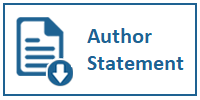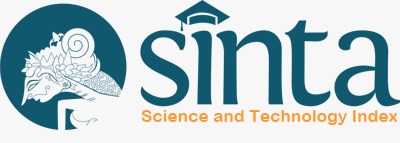Resepsi Penggemar Terhadap Karakter Anime Shounen My Hero Academia, Attack on Titan dan Hunter X Hunter
DOI:
https://doi.org/10.31937/ultimart.v14i2.2168Abstract
One of the most important components in a film or animated series apart from the story is the character. The main characters who drive the plot generally are the main focus and also naturally became fans' favorite character. In several series it is not uncommon to find fans who prefer second lead characters. Why does it happen? There's not a lot of research regarding the topic of fan receptions to various characters that has been conducted before and it is very interesting and important to be studied. Understanding fans' reception of characters can be understood by means of cognitive narratology approach with ‘categorization and personalization' theory by Schneider. Murray Smith's ‘structure of sympathy' theory is also used to further look at the engagement level of fans to their favorite characters. This research is focusing on characters from shounen anime series which have second lead characters that are more popular than the main characters. From this study, identified six categories in fans reception which are personality, character development, goals, design / audio-visual, relationships between characters and emotions. Not only understanding relationships between the characters and emotion, fans also closely following and evaluating the actions that the characters did throughout the story, these factors will also have an effect later on the fans' sense and level of engagement to the characters.
Keywords: character; fans reception; engagement; anime
Downloads
Published
How to Cite
Issue
Section
License
Authors retain copyright and grant the journal right of first publication with the work simultaneously licensed under a Creative Commons Attribution-ShareAlike International License (CC-BY-SA 4.0) that allows others to share the work with an acknowledgement of the work's authorship and initial publication in this journal.
Authors are able to enter into separate, additional contractual arrangements for the non-exclusive distribution of the journal's published version of the work (e.g., post it to an institutional repository or publish it in a book), with an acknowledgement of its initial publication in this journal.
Copyright without Restrictions
The journal permits the author(s) to hold the copyright without restrictions and will hold distributing rights without limitations.
The submitted papers are assumed to contain no proprietary material unprotected by patent or patent application; responsibility for technical content and for protection of proprietary material rests solely with the author(s) and their organizations and is not the responsibility of the Ultimart: Jurnal Komunikasi Visual or its Editorial Staff. The main (first/corresponding) author is responsible for ensuring that the article has been seen and approved by all the other authors. It is the responsibility of the author to obtain all necessary copyright release permissions for the use of any copyrighted materials in the manuscript prior to the submission.















